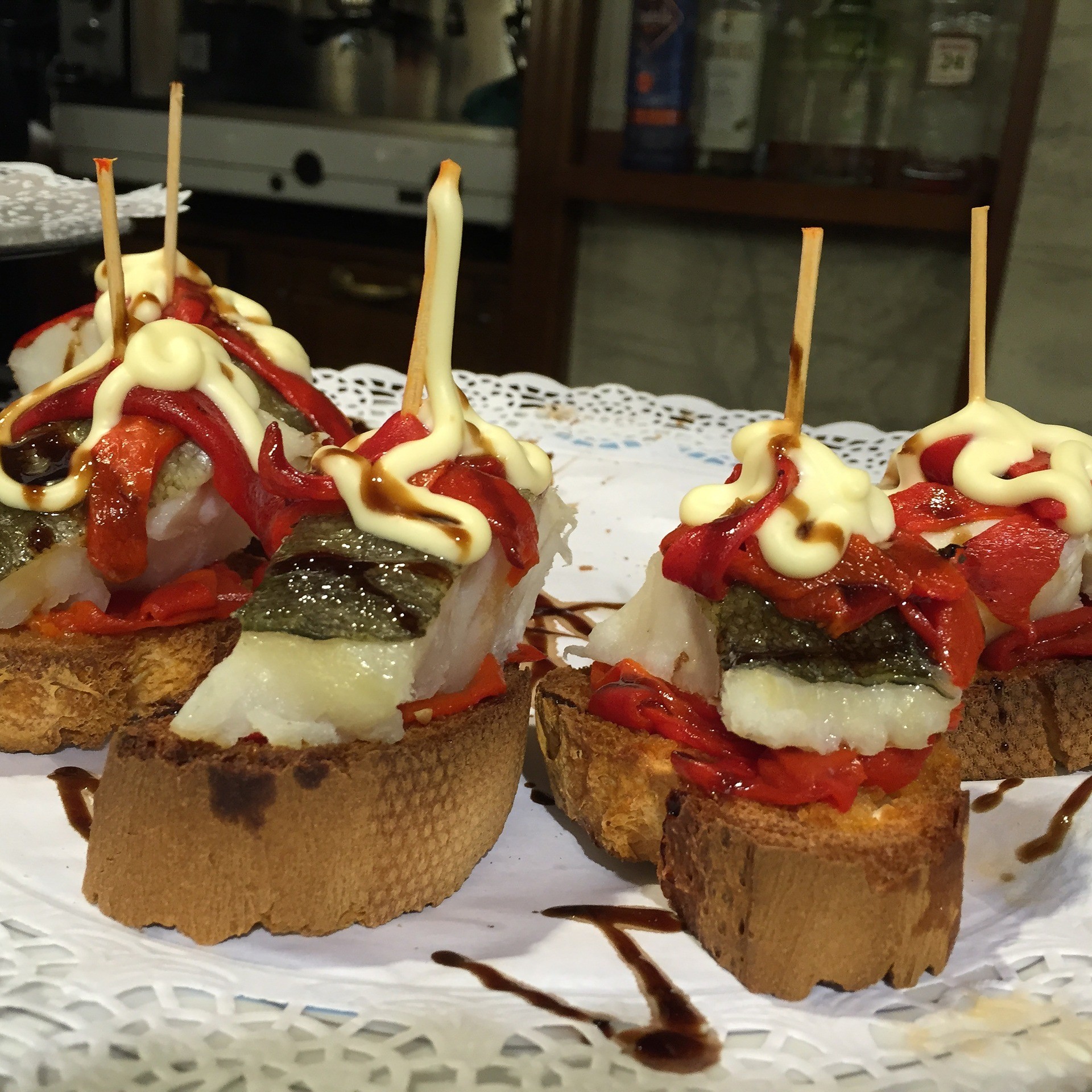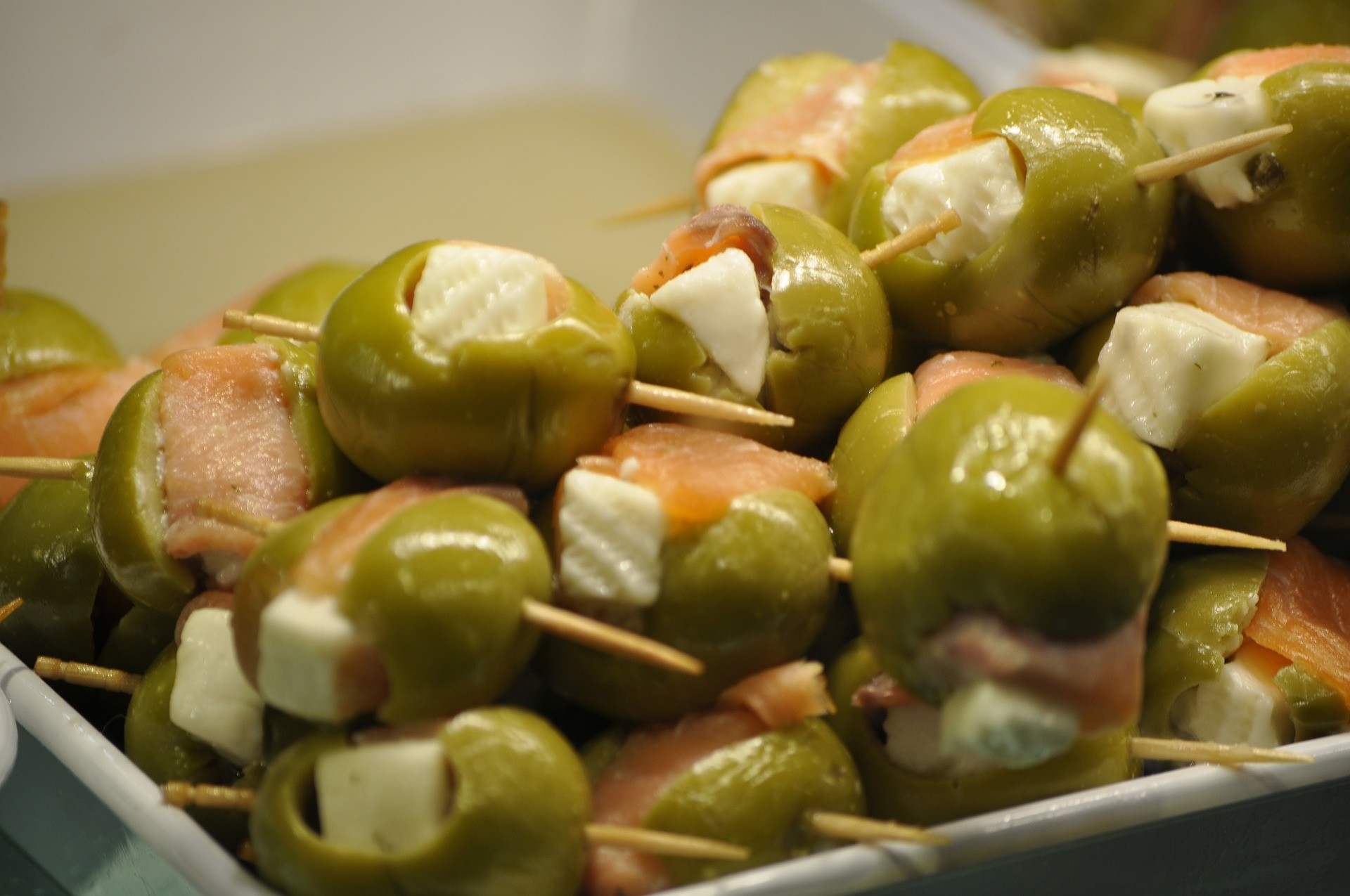Pintxo-Pote Thursdays
If you've been to the Basque Country you've probably heard the word "Pintxo-pote"; but what actually is it?
Well, as you can see it's a word composed of "pintxo", a slice of bread on which a small portion of food is placed, and "pote”, a word that defines a smaller sized drink (be it a small beer, glass of wine, a vermouth, etc. ).
What is Pintxo-Pote?
Well, Pintxo-Pote is an idea that originated in the Basque capital Vitoria-Gasteiz. Once a week, usually on Thursdays (although recently it has expanded and you can go pintxo-pote on Saturdays or Tuesdays) places offer a pintxo plus drink for half of what it would usually cost on other days. Therefore, if it would normally cost about four euros, on Thursdays it will cost two euros. The timing depends on where you are, but it usually starts at 7pm and ends around 10:30 or 11pm.
Realistically they usually don't offer the most expensive pintxo sold at the bar, as they wouldn't make any profit, but, when you go for pintxo-pote you don't usually have just one, you'd usually go from bar to bar. Therefore the drinks that usually accompany your pintxo are smaller.

Where is pintxo-pote?
It originated in the capital of Alava, but soon spread to other Basque cities, such as Bilbao or Donostia-San Sebastian, Errenteria, Mutriku, Basauri, Santurtzi or Irun. Moreover, due to its success, you can now find Pintxo-Pote in more cities in Northern Spain, for example Logroño and the university city of Salamanca.
What do you have in pintxo-pote?
As we have explained before, you have a pintxo and a drink; normally, for drinks you'd usually order a zurito or caña (small beers), a glass of red or white wine. In some bars you could also get a glass of txakoli (sparkling white wine), cider, soft drinks or even sometimes non-alcoholic beer .


As for the pintxos, you usually find the simpler ones in Pinxto-pote to ensure the bars/restaurants make a profit, for example a pintxo with mushrooms, a small croquette, so-called "serranitos" (mini Serrano ham sandwiches), goats cheese with caramelized onion, etc.


Pintxo-pote in the main Basque cities
Next, I will show you where you can get Pintxo-Pote in specific Basque cities:
Pintxo-pote in Bilbao

- Casco Viejo: known for its old bars, you will find pinxto-pote in la Plaza Nueva, Santa María, Somera, Unamuno, Jardines, los cantones…
- Ledesma: near one of the main roads in Bilbao, Gran Vía, Ledesma is usually busy around lunchtime, as well as for pintxo-pote on Thursdays. There is a great variety of bars with offers on Thursdays, so if you're walking around Gran Vía, you know where to go to eat, drink and recharge.
- Diputación: Ledesma and Diputación, both near Gran Vía, are both (at weekends) more focused on adults and families. This street also offers a variety of the best pintxos of the Biscayan capital.
- Wells: this is where you'll find Bilbao's youth on pintxo-pote days. It is thought to be one of the pedestrian streets with the most bars in Spain.
- Guggenheim: near the Guggenheim museum there are many places that now offer a wide variety of pintxos. Try streets like Mazarredo, Lersundi, Iparraguirre, Henao etc.
- Deusto: you'll find all kinds people on pintxo-pote Thursdays in this neighborhood, and you'll find quality pintxos in many places the streets of Lehendakari Aguirre or Blas de Otero (among others).
Near Bilbao, in Santurtzi, pintxo-pote is held in the street of Juan XXIII and Capitán Mendizábal in bars like Wagon, Cayo Triste or La Batea (where they make delicious mussels).
Pintxo-pote in Donostia-San Sebastián

- Gros: the excellent pintxo-pote district, and one of the favorites of the Donostiarras. For me and other croquette lovers, my favorite is the Ipotx bar, especially its ham and egg croquette (mmm! ).
- Amara: This neighbourhood extend the offer from Tuesday to Friday, so if you want pintxo-pote on a Tuesday, this is the place for you.
In the districts of Altza and Larratxo, Amara, Antiguo-Lorea, the centre, Egia, Intxaurrondo, and Casco Viejo there's also a great variety of pintxos at quite reasonable prices.
Pintxo-pote in Vitoria-Gasteiz
In the original capital of the pintxo-pote the celebration is organized by "routes". Depending on which days of the week it is done, there are different routes. Today I will talk to you about the Thursday route, as it is the original day.
- The route of the Gorbea: Gorbea, Badaia, Cruz Blanca, Navarro Villoslada, Sancho el Sabio and Bastiturri.
- La ruta de Lakua: Plaza de Ignacio Aldecoa, Blas de Otero, Duque de Wellington, Baiona, Pamplona, Landaberde, Belate, Hondarribia, Zarautz.
- La ruta de Judimendi: Plaza de Pepe Ubis, Santa Lucía, Federico Baraibar, Errekatxiki, Polvorín viejo.
- The route of the Virgen Blanca : Plaza de la Virgen Blanca, Cuesta de San Francisco, Mateo Moraza, Correría...
- La ruta de la Salburúa : Avenida de Juan Carlos I, Viena, Avenida de París, Paseo de Europa, Bulevard de Salburua Avenida de Londres, Paseo de Estrasburgo.
- The route of Zabalgana: Avenue of Nations, Avenue of Human Rights, Avenue of Zabalgana, Boulevard de Mariturri, Martin Luther King, Avenue of Illustration, Oyón, Paseo de la Unesco.
- The route of Aranaido : c/ Pedro Orbea, plaza San Antón, c/ La Esperanza, c/ Francia, c/ Los Herrán.
- The route of San Prudencio : San Prudencio and Dato.
I have to say that this guide is just that, a guide, there is no doubt that many places outside this framework will also celebrate the pintxo-pote, and you have the option of being able to eat and drink in this way.
Well, I hope this guide has helped you and that if you are in the Basque Country for your Erasmus, you will settle in by going to your nearest pintxo-pote neighbourhood every Thursday.
Photo gallery
Content available in other languages
- Español: Los jueves de pintxo-pote
- Italiano: I giovedì del "pintxo-pote"
Want to have your own Erasmus blog?
If you are experiencing living abroad, you're an avid traveller or want to promote the city where you live... create your own blog and share your adventures!
I want to create my Erasmus blog! →
























Comments (0 comments)